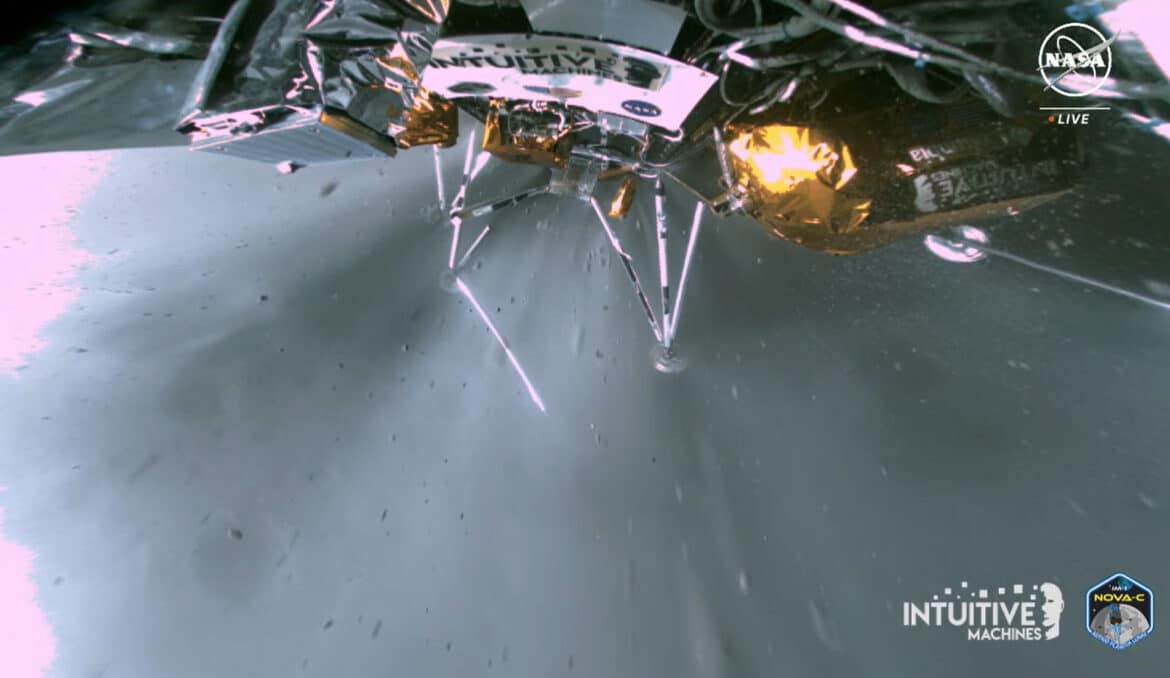
Share
Published on 07 November 2022
At the end of 2021, the NASA InSight probe’s French seismometer recorded the tremor caused by the impact of a small asteroid on Mars. From orbit, the MRO probe photographed the crater and the blocks of water ice ejected around it.
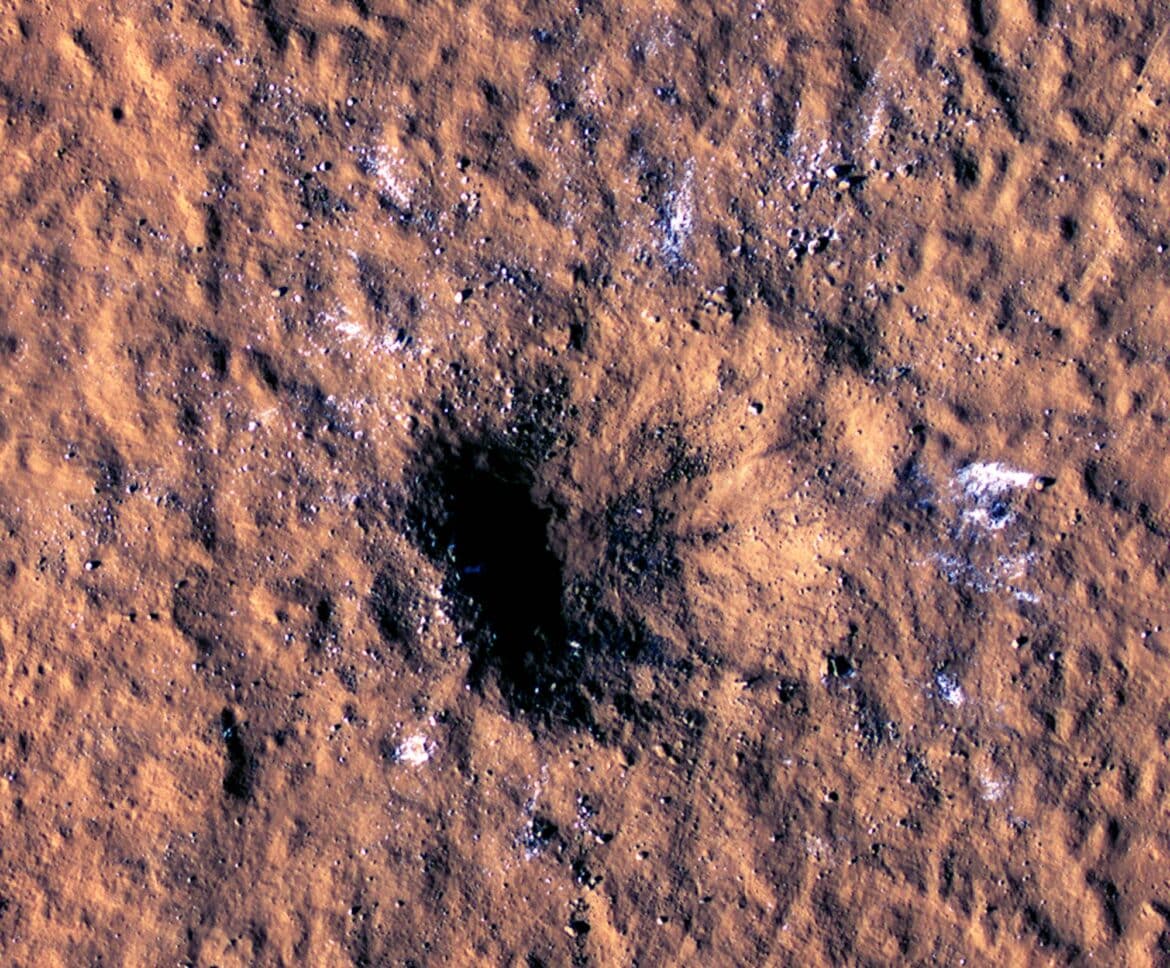
To advance, science requires a great deal of rigour and preparation. This is particularly true for space exploration where a mission requires years, even decades, of work in advance before a probe begins to send its first readings .
And sometimes, you have to know how to take advantage of the unexpected with what already exists . Thus, by combining data from a lander and an orbiter on the same event, scientists have observed the presence of water ice on Mars, where we were not expecting it …
The unexpected event in question took place on December 24, 2021, (the subsequent scientific analysis thus required a little less than a year of work). A small asteroid hit the red planet. 3,500 km away, the shock was recorded as a magnitude 4 earthquake by the InSight lander’s SEIS (Seismic Experiment for Interior Structure) seismometer, stationed at Elysium Planitia since November 2018.
Below is a recording of the impact. The frequencies have been transposed in order to be audible to the human ear.
While the InSight lander is American, its SEIS Martian earthquake detector was provided by CNES, the French space agency.
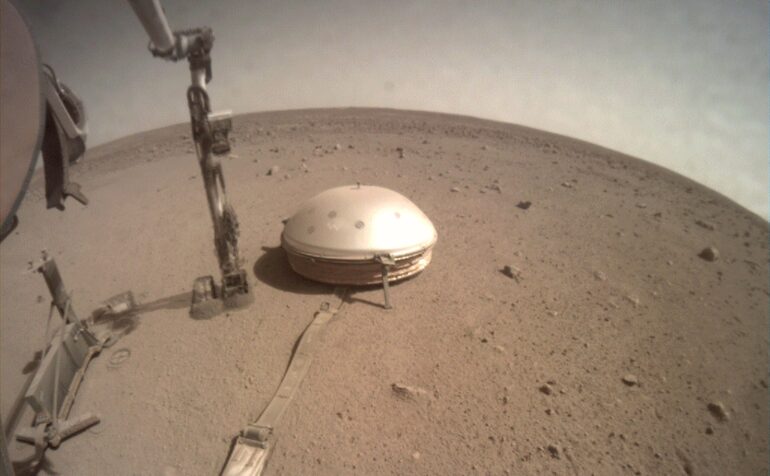
A photograph of the SEIS seismometer. It was lowered to the ground by the robotic arm of the InSight lander (as it does not move, it is not a rover).
Credit : NASA/JPL-Caltech
At NASA’s Jet Propulsion Laboratory (JPL), scientists led by planetary scientist Ingrid Daubar are tasked with finding matches between earthquakes picked up by InSight and asteroid impacts on Mars. While some earthquakes reflect planetary activity, others are indeed caused by impacts. By examining the photos taken from orbit by the Mars Reconnaissance Orbiter probe (MRO, up there since 2006), Ingrid Daubar ‘s team spotted a crater which appeared on Christmas Eve 2021. There is nothing very surprising about that in itself, except with regard to what is around the hole thus formed .
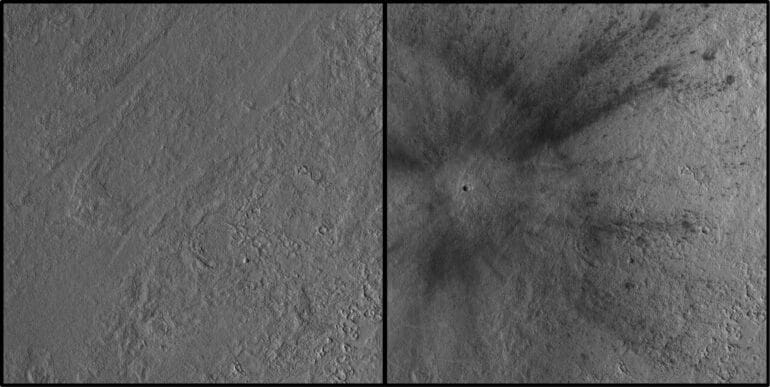
The Amazonis Planitia region before and after an asteroid impact in December 24, 2021. An image from the MRO orbiter. Ejecta cover an area up to 37 km away!
Credit: NASA/JPL-Caltech/ MSSS
The MRO orbiter is equipped with several cameras. One takes low-resolution photos of the whole of Mars every day . It therefore made it possible to confirm the date of December 24, 2021 for the new crater and to link it to the earthquake recorded by InSight. Two other more powerful cameras obtained more precise images . The first (the CTX camera) is visible above and shows the extent of the ejecta . The second (below) comes from the HiRISE camera with a resolution of 25 cm and specifies a crater 150 m wide and 21 m deep. This corresponds to a small asteroid 5 to 12 m wide (on Earth it would almost entirely burn up, our planet’s atmosphere being 170 times denser than that of Mars).
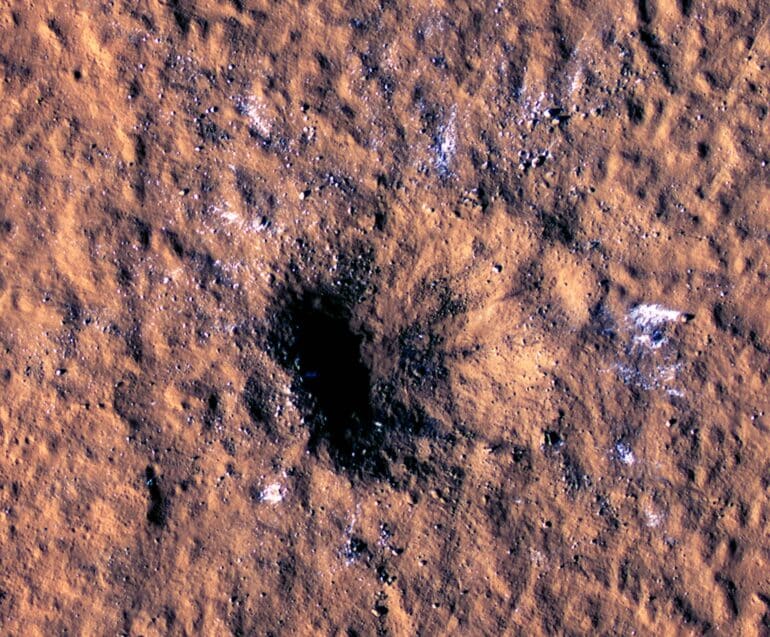
The 150 m wide crater carved by the impact of the December 24, 2021 asteroid on Mars. In white: the blocks of water ice torn up from the subsoil.
Credit: NASA/ JPL -Caltech/University of Arizona
Above all, the photo shows blocks of water ice scattered around this crater, a free “drilling” into the Martian subsoil down to about twenty metres deep. For such an impact to reveal this type of ice would be nothing really new … if it had occurred close to the poles. However, the region of Amazonis Planitia involved is only at a latitude of 24 ° North. “This is the closest to the equator that we have ever seen water ice,” said Ingrid Daubar at a NASA press conference in October 2022. This discovery will therefore further constrain the theoretical models of the evolution of the Martian climate. We know that 3.5 billion years ago conditions on the red planet allowed liquid water to be present on its surface. Today, on the other hand, with regard to conditions of temperature and pressure, water ice is sublimated (passing directly from a solid state to vapour). This, by the way, was the case for the water ice scattered around the crater at the end of 2021.
The other lesson of this impact concerns future crewed missions (in the very long term as far as Mars is concerned). Water ice in the subsoil could be used by astronauts to provide water, as well as oxygen and hydrogen (to breathe, power batteries, for fuel cells or as fuel for rockets). This is because local resources would make it possible to make ships going to the red planet lighter. However, there are still many substantial unknowns, such as how easy access to this water ice in the subsoil would actually be, how much would be available, as well as the technical feasibility of the devices used to extract and process it.